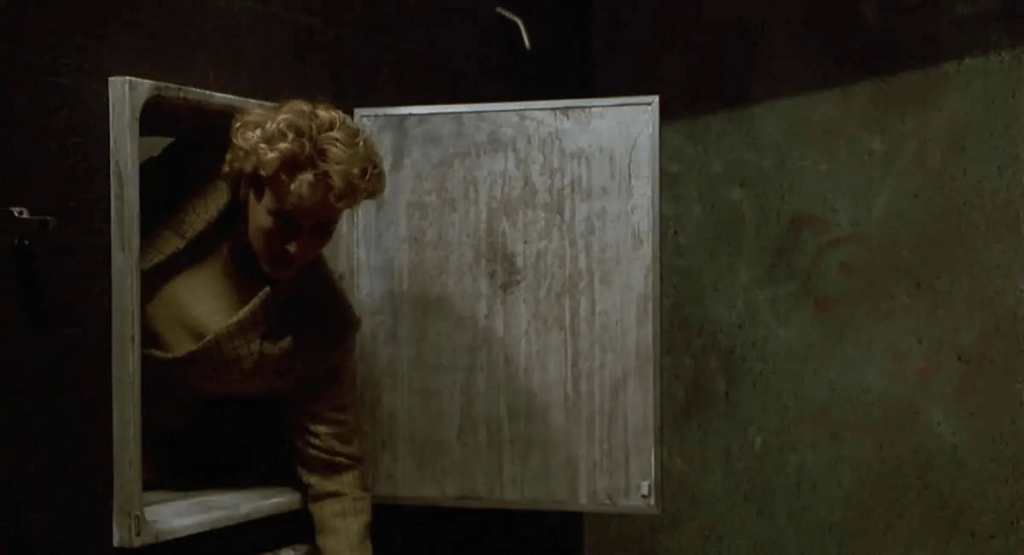One of the plot points of 1992’s Candyman centered around a unique way the builders of Chicago’s Cabrini Green cut corners: making the walls so thin that in order to cut a recess for the bathroom mirror they had to cut straight through to the other apartment. This meant that if both sides removed their bathroom mirror, there would be a hole between apartments. A hole large enough for someone to squeeze through. This was used as one explanation of how the legend of Candyman took hold – residents thought it was an attack of a vengeful spirit lunging out of the mirror, when in reality it was simply someone breaking in from the other side of the wall.

This feature was based on the tragic real-life story of Ruthie Mae McCoy, a resident of the Chicago Housing Authority projects. In 1987, McCoy made a call to 911 claiming someone was trying to break in to her apartment.
Dispatcher: “They want to break in?”
Source
McCoy: “Yeah, they throwed the cabinet down.”
Dispatcher: “From where?”
McCoy: “I’m in the projects, I’m on the other side. You can reach—can reach my bathroom, they want to come through the bathroom.”
Police were dispatched, but when she didn’t answer her door they didn’t pursue the issue. It wasn’t until days later, when Ruthie had still not opened her door, that they finally drilled out the lock to enter the apartment. They found Ruthie murdered – shot four times – and her apartment ransacked.
Initially unsure how a woman could have been murdered in a locked apartment, investigators eventually traced it back to the architecture flaw of the space between adjoining bathroom mirrors. Two suspects were arrested and brought to trial, but ultimately found not-guilty. The case is still unsolved.
In a somewhat questionable move, the filmmakers of Candyman decided to actually use Ruthie’s story in the script, mentioning her by name, supposing that she may have been a victim of the supernatural killer.
Thanks to Reddit user holyhackzak for finding this article.